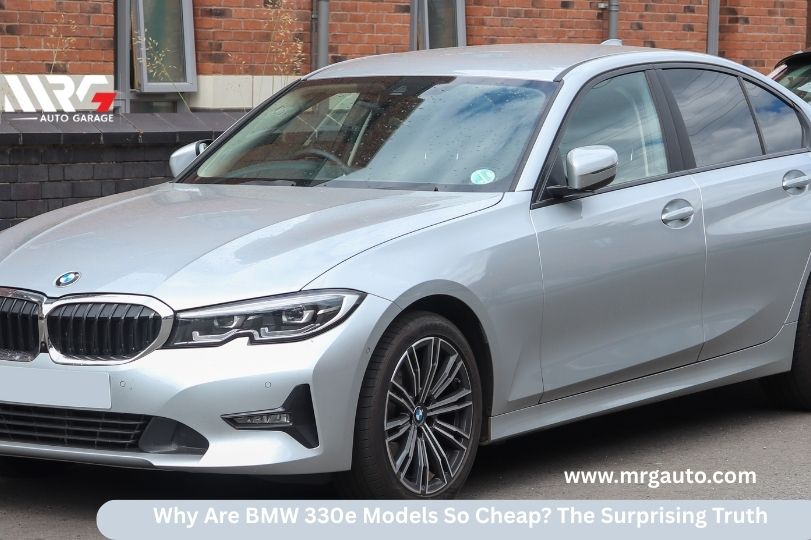If you’ve been shopping for a premium sports sedan, you’ve likely noticed a puzzling trend: the BMW 3 Series Hybrid, specifically the BMW 330e, often carries a significantly lower price tag on the used market compared to its pure gasoline siblings. This can seem counterintuitive. You’re getting a car with more technology—an electric motor combined with a turbocharged engine—for less money.
So, what’s the catch? Why are BMW 330e models so affordable, and should you consider buying one? In this deep dive, we’ll explore the key factors behind their depreciation, from battery concerns to real-world ownership costs, covering everything from the sleek BMW 330e M Sport saloon to the practical BMW 330e Touring estate and the all-weather BMW 330e xDrive.
Understanding the Initial Appeal of the BMW 330e
First, it’s crucial to understand why the BMW 330e exists. It was engineered as a “plug-in hybrid electric vehicle” (PHEV) to offer a best-of-both-worlds solution:
- Performance: Combined power from the engine and electric motor delivers impressive acceleration (often quicker than the equivalent 330i).
- Efficiency: Short commutes can be completed on electric power alone, saving fuel.
- Tax Incentives: Originally, significant government grants and, crucially, very low Benefit-in-Kind (BIK) company car tax rates in the UK made it a hugely attractive fleet vehicle.
This last point—its popularity as a fleet car—is the first major clue to its depreciation.
The 5 Key Reasons Why Used BMW 330e Prices Are Low
1. The Flood of Ex-Lease and Ex-Fleet Vehicles
The primary driver behind the BMW 330e’s steep depreciation is its initial sales volume. Due to its incredibly low tax liability for business users, companies and leasing fleets bought them in massive numbers. After a typical 3- or 4-year lease cycle, these cars hit the used market simultaneously.
2. Battery Anxiety and Perceived Complexity
Many used car buyers are wary of hybrid technology. Concerns about the lifespan, degradation, and potential replacement cost of the high-voltage battery loom large. While most BMW 3 Series Hybrid models come with a lengthy battery warranty (often 6-8 years), the perceived risk is enough to deter a segment of buyers, pushing prices down. Additionally, the car is simply more complex than a standard petrol engine, with more components that could theoretically fail.
3. The “Compromised” Boot Space
This is a practical and significant issue, especially for families. The BMW 330e’s battery pack is located under the boot floor, which eats into cargo capacity. The saloon version loses about 100 litres compared to a 330i, and the issue is even more pronounced in the BMW 330e Touring, where the boot is noticeably shallower. For buyers who need maximum practicality, this is a genuine deal-breaker and a clear reason why the car is less desirable on the secondary market.
4. The Need for a Lifestyle Fit (Charging Access)
To truly reap the benefits of a PHEV, you need regular access to charging—ideally at home overnight. A BMW 330e driven mostly on its petrol engine becomes a heavier, more complex 330i with worse fuel economy. Many used car buyers either can’t charge at home or aren’t committed to the routine of plugging in. Without charging, the car’s core advantage vanishes, making it a less appealing proposition and suppressing its value.
5. Rapidly Evolving Technology
The electric vehicle market is advancing at a breakneck pace. The earlier BMW 330e models (pre-2019) had a relatively short all-electric range (around 15-20 miles). While newer versions have improved significantly (up to 36 miles), the perception of older models being “outdated” contributes to their sharp depreciation. Buyers interested in electrification may now be looking at used pure EVs or newer PHEVs with better range.
Model-Specific Considerations: 330e xDrive and Touring
- BMW 330e xDrive: The all-wheel-drive version adds another layer of complexity and cost, which can concern used buyers. However, for those in climates with harsh winters, a used 330e xDrive can represent an incredible value, offering four-season capability and efficiency.
- BMW 330e Touring: The estate version is a fantastic all-rounder, but the boot space compromise is real. If you don’t regularly need the full depth of a standard 3 Series Touring’s boot, a used 330e Touring offers a unique blend of performance, efficiency, and practicality that is incredibly cheap for what it is.
Should You Buy a Used BMW 330e? The Verdict.
You should seriously consider a used BMW 330e if:
- You have reliable access to charging at home or work.
- You value strong, smooth acceleration and want a premium badge.
- The reduced boot space is not a critical issue for your lifestyle.
- You prioritize low running costs and can leverage the electric mode for most short trips.
You should probably avoid a used BMW 330e if:
- You have no way to charge it regularly.
- You need every litre of the standard 3 Series boot space.
- The thought of potential out-of-warranty hybrid system repairs causes anxiety.
It’s a perfect storm of high supply, specific practicality compromises, and technology fears. For the driver whose lifestyle aligns with the PHEV concept, a used BMW 3 Series Hybrid offers a level of performance, refinement, and tech that is simply unmatched by other cars in its price bracket. It’s a smart buy for the savvy driver.

Aayush is an Automobile Engineer who repairs and tests cars and their components, applying engineering principles to improve the performance, safety, and efficiency. He works on car engines, brakes, and electrical systems, utilizing computerized models to predict performance and ensure vehicles meet standards.

